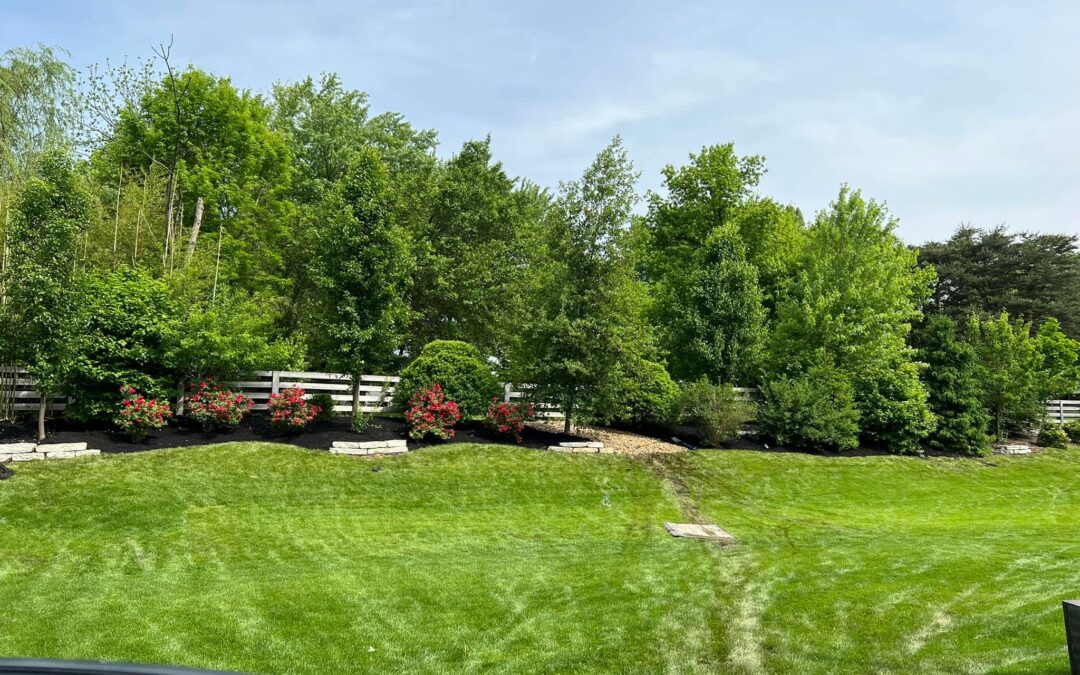Sustainable landscaping practices are becoming increasingly important for not only the environment, but for homeowners as well. At Top Scapes Design, based in Cincinnati, OH, we understand the importance of incorporating sustainable techniques into our landscaping projects, and we want to share that knowledge with our clients. If you have any questions or are interested in incorporating sustainable practices into your own landscape, please don’t hesitate to give us a call at (937) 218-6729.
The Importance of Sustainable Landscaping Practices
As the population continues to grow, and urban sprawl continues to expand, it’s more important than ever to consider the impact of our actions on the environment. Landscaping is a significant contributor to this impact, as it requires the use of water, energy, and resources. Sustainable landscaping practices aim to reduce this impact by minimizing the use of resources and maximizing the use of natural systems. By incorporating sustainable landscaping practices, not only can we help protect the environment, but we can also create beautiful and functional outdoor spaces that are better for both people and the planet.
What is Sustainable Landscaping?
Sustainable landscaping is the practice of designing, installing, and maintaining a landscape that is both environmentally responsible and resource-efficient. This includes using native plants, reducing the use of water and chemicals, and incorporating sustainable design elements such as rain gardens and permeable pavers.
Benefits of Sustainable Landscaping
There are many benefits to incorporating sustainable landscaping practices into your outdoor space. Here are just a few:
Water Conservation:
One of the most significant benefits of sustainable landscaping is the reduction of water usage. Native plants are well-adapted to the local climate and require less water to thrive. Additionally, incorporating rain gardens and other water-saving features can help to reduce the amount of water needed to maintain your landscape.
Reduced Maintenance:
Sustainable landscapes are designed to be low-maintenance. By using native plants and incorporating sustainable design elements, you can reduce the need for regular watering, fertilizing, and other maintenance tasks.
Increased Biodiversity:
Sustainable landscaping can help to increase biodiversity by using native plants, which provide food and habitat for a variety of wildlife. This can help to create a more balanced ecosystem in your backyard.
Cost Savings:
Incorporating sustainable landscaping practices can help to reduce the costs associated with maintaining your landscape. By reducing the need for water and chemicals, you can save money on your water and landscaping bills.
Improved Air Quality:
Plants naturally remove pollutants from the air, and sustainable landscapes are designed to maximize the number of plants in a given area. This can help to improve the air quality in your outdoor space, making it a healthier place for you and your family to spend time.
How to Incorporate Sustainable Landscaping Practices
If you’re interested in incorporating sustainable landscaping practices into your outdoor space, there are several steps you can take:
Use native plants:
Start by incorporating native plants into your landscape. These plants are well-adapted to the local climate and require less water and maintenance to thrive.
Reduce water usage:
Incorporate water-saving features such as rain gardens and permeable pavers. These features help to reduce the amount of water needed to maintain your landscape.
Incorporate sustainable design elements:
Incorporating sustainable design elements such as rain gardens, permeable pavers, and green roofs can help to reduce the environmental impact of your landscape.
Use organic methods:
Instead of using chemical pesticides and fertilizers, use organic methods to maintain your landscape. This can help to reduce the environmental impact of your landscaping and create a healthier environment for your family and the local ecosystem.
Practice proper maintenance:
Regular maintenance is key to maintaining a sustainable landscape. This includes proper irrigation, regular pruning, and mulching to reduce the need for water and chemicals.
Consider a landscape assessment:
A landscape assessment can help you to identify areas in your landscape that could be made more sustainable. This can include identifying areas that are over-watered, areas that could benefit from additional plantings, and areas that could be converted to more sustainable design elements.
Sustainable landscaping practices are essential for protecting the environment and creating beautiful and functional outdoor spaces. At Top Scapes Design, we understand the importance of incorporating sustainable techniques into our landscaping projects and are dedicated to helping our clients create sustainable landscapes that are better for both people and the planet. If you’re interested in learning more about sustainable landscaping or are ready to incorporate sustainable practices into your own landscape, please don’t hesitate to give us a call at (937) 218-6729.

